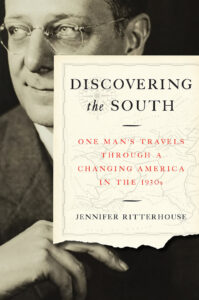The University Libraries, Mason Publishing,
and the University Bookstore present
General Michael V. Hayden
 Discussing his book: Playing to the Edge: American Intelligence in the Age of Terror
Discussing his book: Playing to the Edge: American Intelligence in the Age of Terror
Thursday, May 4th
3:00-4:30 pm
Main Reading Room
Fenwick Library
Fairfax Campus
For General Michael Hayden, playing to the edge means playing so close to the line that you get chalk dust on your cleats. Otherwise, by playing back, you may protect yourself, but you will be less successful in protecting America. “Play to the edge” was Hayden’s guiding principle when he ran the National Security Agency, and it remained so when he ran the CIA. In his view, many shortsighted and uninformed people are quick to criticize, and this book will give them much to chew on but little easy comfort; it is an unapologetic insider’s look told from the perspective of the people who faced awesome responsibilities head on, in the moment.
How did American intelligence respond to terrorism, a major war and the most sweeping technological revolution in the last 500 years? What was the NSA before 9/11 and how did it change in its aftermath? Why did the NSA begin the controversial terrorist surveillance program that included the acquisition of domestic phone records? What else was set in motion during this period that formed the backdrop for the infamous Snowden revelations in 2013?
For 10 years, then, General Michael Hayden was a participant in some of the most telling events in the annals of American national security. General Hayden’s goals are in writing this book are simple and unwavering: No apologies. No excuses. Just what happened. And why. As he writes, “There is a story here that deserves to be told, without varnish and without spin. My view is my view, and others will certainly have different perspectives, but this view deserves to be told to create as complete a history as possible of these turbulent times. I bear no grudges, or at least not many, but I do want this to be a straightforward and readable history for that slice of the American population who depend on and appreciate intelligence, but who do not have the time to master its many obscure characteristics.”
 General and Distinguished Visiting Professor Michael Hayden is a retired four-star general who served as director of the Central Intelligence Agency and the National Security Agency — the only person to helm both agencies— during a time of heinous new threats and wrenching change. In addition to leading CIA and NSA, General Hayden was the country’s first principal deputy director of national intelligence and the highest-ranking military intelligence officer in the country. He also served as commander of the Air Intelligence Agency and Director of the Joint Command and Control Warfare Center and served in senior staff positions at the Pentagon, at U.S. European Command, at the National Security Council, and the U.S. Embassy in Bulgaria. He was also the deputy chief of staff for the United Nations Command and U.S. Forces in South Korea. He is currently a principal at the Chertoff Group and a distinguished visiting professor at the George Mason University Schar School of Policy and Government.
General and Distinguished Visiting Professor Michael Hayden is a retired four-star general who served as director of the Central Intelligence Agency and the National Security Agency — the only person to helm both agencies— during a time of heinous new threats and wrenching change. In addition to leading CIA and NSA, General Hayden was the country’s first principal deputy director of national intelligence and the highest-ranking military intelligence officer in the country. He also served as commander of the Air Intelligence Agency and Director of the Joint Command and Control Warfare Center and served in senior staff positions at the Pentagon, at U.S. European Command, at the National Security Council, and the U.S. Embassy in Bulgaria. He was also the deputy chief of staff for the United Nations Command and U.S. Forces in South Korea. He is currently a principal at the Chertoff Group and a distinguished visiting professor at the George Mason University Schar School of Policy and Government.
Refreshments will be provided.
The Mason Author Series is sponsored by the University Bookstore.
 Curriki is a nonprofit global community that offers free K-12 learning resources for teachers, students, and parents. The resources on Curriki cover a wide range of subjects in the arts and sciences. Curriki offers over 55,000 Open Educational Resources and its 400,000 members represent nearly 200 countries.
Curriki is a nonprofit global community that offers free K-12 learning resources for teachers, students, and parents. The resources on Curriki cover a wide range of subjects in the arts and sciences. Curriki offers over 55,000 Open Educational Resources and its 400,000 members represent nearly 200 countries. Not-for-profit Khan Academy is an organization dedicated to providing a “free world-class education for anyone anywhere.” Content includes interactive challenges, assessments, and video in an array of topics for kindergartners through adult learners. Create an account to practice standardized tests and keep statistics on assignments and coursework you’ve completed, noting your progress as you learn.
Not-for-profit Khan Academy is an organization dedicated to providing a “free world-class education for anyone anywhere.” Content includes interactive challenges, assessments, and video in an array of topics for kindergartners through adult learners. Create an account to practice standardized tests and keep statistics on assignments and coursework you’ve completed, noting your progress as you learn.![]()




